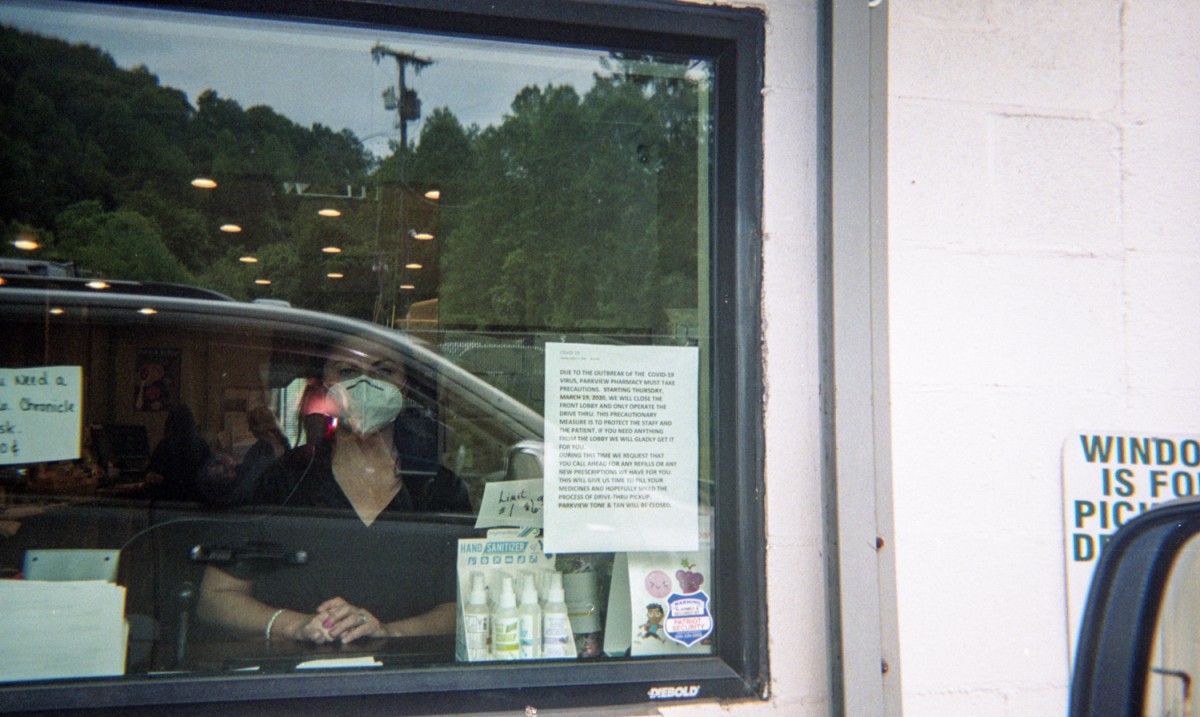Traditional Appalachian pull candy — sometimes called cream pull candy or Kentucky pull candy — is known for two things: its buttery, melt-in-your-mouth flavor and the painstaking process required to make the stuff.
The candy must include exact ratios of all the ingredients. It has to be cooked to an exact temperature for a precise amount of time.
Even the temperature outside must be perfect, lest the candy set up into a hard worthless mass.
This is why Joe Parcell of Winfield, West Virginia, won’t even attempt making candy unless the thermometer is below 50.
He can usually make candy from October through May. Toward the end of the season, he gets up at 4 a.m. to begin cooking, when it’s still cool enough.
When West Virginia Public Broadcasting showed up at his home on the Kanawha River to watch Parcell in action, he’d been watching the mercury all morning.
“It’s going to be too warm after 12 to make it, so we better get in there,” he said.

Parcell already had everything ready to go. He measured out one-and-a-quarter cups of water, using a digital scale to make sure it was exact. That went into a cookpot with four cups of sugar, also measured on the scale.
Next, he measured out some evaporated milk into a measuring cup: eight ounces, on the nose.
He added a pinch of baking soda to the cup. Even Parcell’s pinches are precise. He has a special pinch-sized measuring spoon.
Making pull candy requires this exacting eye for detail at every step in the process.
“If it overcooks or undercooks by one notch on the thermometer, it’s not a good batch,” he said.
But Joe has done this so many times, he doesn’t once look at a recipe. He has all the steps down to a tightly choreographed dance.
He didn’t always have it down to a science. He has been making candy for 36 years but says he only mastered the process in the last seven or eight.
This isn’t a recipe you can just Google. You’ve got to learn it from someone else.
Parcell learned to make pull candy from his first wife, who learned how to make it from her former school bus driver. The bus driver used to sell his candy to students. Parcell’s ex ran into him years later and asked if he still made candy. He said he was now too old — his shoulders were too weak to stretch the candy. But he offered to teach her.
For years, she would make the candy and Parcell would stretch it. Until they split up. So Parcell made a bargain with her.
“She came out every Wednesday to see the kids and dogs,” he said. “And I said, ‘The next time you come out to see the kids and dogs, tell me what to have and I’ll buy the ingredients. Teach me how to make that candy and I’ll give you half of it.’”
She took him up on his offer.
“As far as I know that’s the last she’s ever had of it,” he said.
When Parcell sees that the candy on his stove has reached the appropriate temperature, he adds his milk, baking soda and butter. He then brings the pot back up to a boil.
The air fills with a sweet, creamy smell. This is the point of the process that usually attracts visitors to the kitchen.
“My wife, she’ll say, ‘How you doing, candy man?’ She knows I’m making it just by the smell,” he said.
Parcell is still keeping an eye on that thermometer. But at this stage, he almost doesn’t need it. He will know when it’s ready when it reaches the correct color — a light caramel.

“When it cools enough that you can handle it, that’s when you take it out and stretch it. If you take it out too soon, it’ll burn you. If you take it too late, it’s harder to pull,” he said.
At this point, the candy looks like a big ball of silly putty. When it has sufficiently cooled, Parcell takes the pan downstairs and through a set of french doors to his hook. It’s a simple device — just a long nail, bent into a U-shape and mounted to a post. Parcell has been using the same one for 20 years.
He takes the candy from the pan. He stretches it into a long rope, then loops it over the hook. He pulls both sides down and brings them together in the middle. Then he stretches the rope again and loops it back over the hook.
He repeats this same motion over and over.
“I make it look easy, but it’s not,” he said. “I tell people jokingly, you stretch it to the point of exhaustion and give it three more pulls.”
The longer Parcell goes, the more difficult stretching gets. You can hear it in his breathing. You can see it, in the way his muscles strain against the candy.
“I was doing it so fast the other day, my smart watch asked me if I was in a pool swimming,” he said.
This is another moment of truth in the pull candy process. If it turns lighter while Parcell stretches, he knows it’s a good batch.
He stretches until he’s exhausted — then gives it three more pulls. He salvages what he can off the hook. Then it’s back through the french doors to a downstairs countertop.
Parcell stretches the hardening candy into a 10-foot-long rope. He grabs a pair of tin snips and begins to cut. At this point, the candy is warm and soft. But soon the cutting begins to get more difficult for Parcell. The candy is becoming rock hard.
“Once you make it, it’s taffy. In about 24 to 48 hours, it will turn to cream,” he said.

He puts the candy pieces into bags, ready for the freezer. He freezes the candy in taffy form. Once it thaws, it takes on that melt-in-your-mouth texture.
“I’ve got a freezer full. Actually I’ve got two freezers full,” he said.
For years, Parcell just gave the candy away. He decided to start selling it a few years ago, after he retired from coal mines, He’s just a wholesaler, though. He sells to one guy who flips it on Facebook Marketplace. You can also find Joe’s candy at the Chum’s Hotdogs in Marmet, West Virginia — home of the famous yellow slaw.
After 36 years of candy making, he isn’t slowing down much. On a dare from his wife, he once made 14 batches of candy in a day. At about 150 pieces of candy per batch, that’s 2,100 pieces of candy. But he knows, just like his time in the mines, this career can’t go on forever. He knows his candy-making days are probably numbered.
“I’ve still got good upper body strength for stretching, but I’ve got arthritis in my hand. I’m just not the little boy I used to be,” he said.
He wants to pass the recipe along but isn’t having much luck. He’s taught eight people to make pull candy over the decades. None of them kept at it.
“(It’s) too hard,” he said. “I’ve made videotapes and sent them to people. I’ve got two nephews I’m wanting to teach to make it. I invited them down for this, so I could demonstrate all at one time. They had other things to do.”
But Parcell isn’t planning on stopping anytime soon. In fact, he’s looking to expand his market. He’s thinking of taking his candy to the flea market in Milton, West Virginia. His current wife Becky is researching how to get into Tamarack in Beckley. His son sells honey at the sweets shop on Snowshoe Mountain and Joe hopes to get his candy in there next season.
He’s even doing a little rebranding. He called his product “Joe Candy” for years but has now reworked the name a little.
“Parcell’s Old Fashioned Pulley Candy is my official name,” he said. “I thought maybe that’s just a little more catchy.”
This article was originally published by West Virginia Public Broadcasting.



